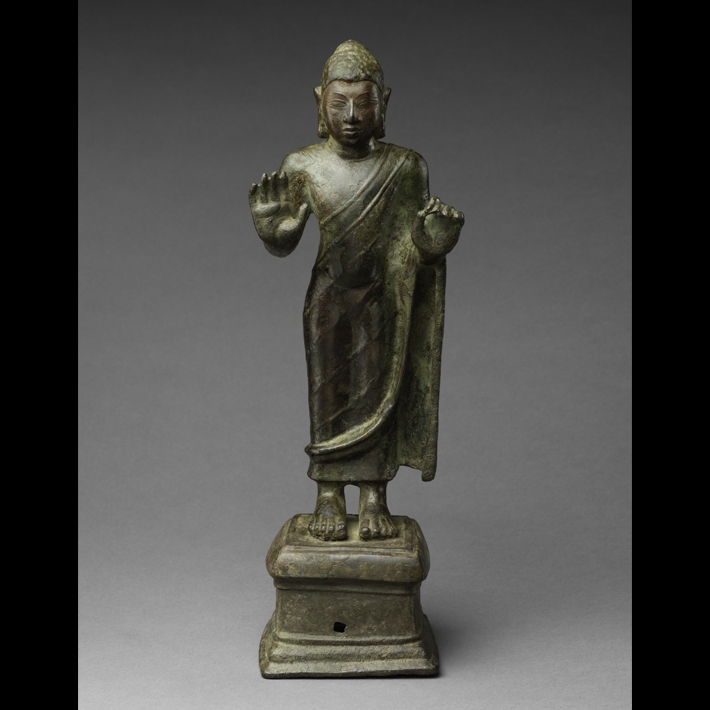90.Buddha offering protection

- 5th century
- Unknown provenance in the Deccan, likely Andhra Pradesh
- The Metropolitan Museum of Art, New York
The production of cast-metal images marked a new stage in Buddhist devotional practice. Rituals and texts for their care and worship became regular features of monastic life by the middle of the first millennium. These three bronze Buddhas represent the later development of Deccan Buddhist imagery, which grew stylistically out of the stone sculpting tradition. This is seen in the body's symmetrical frontality and the drapery's curvilinear folds. The Buddha in The Met collection has traces of an inscription on the pedestal that names a monastery otherwise unrecordedm-and a donor. The script firmly dates this icon to the fifth-century Deccan, in all likelihood the Andhra territories.

 Previous
Previous